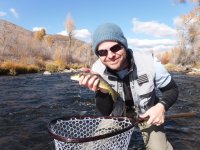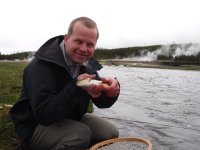JeremyW
Active member
So I'm wondering why there is a bias toward only dry fly fishing when there is a hatch... maybe it's that guides I started with were not that good, or the videos that I 've watched always suggest matching the hatch, but I've caught a ton of fish by NOT matching the hatch.
In fact, I sort of can't believe the number of fish I have caught on dry fly stimis since I started. I only started a few years back, but I remember last year when I lived in Utah, fishing on the provo river with a size 12 purple parachute adams, just trying things out; I must of caught 15 brown trout of all different sizes, without a much of a hatch and with a fly that doesn't really actually look like a bug that hatches on that river. But Not just there, I've caught fish down in SNP all this winter, with few to no bugs hatching during that time. Granted we had a warm winter...
Don't misunderstand me saying you shouldn't match the hatch, when there is one, I also enjoy that... but if you like dry fly fishing, and are relatively new, give prospecting a go... the only place I'd maybe avoid just prospecting it is cold water spring creeks, as those fish have little reason to surface with all the food under the surface but who knows.
You might be surprised how often you'll catch fish on a dry when there is no hatch.
In fact, I sort of can't believe the number of fish I have caught on dry fly stimis since I started. I only started a few years back, but I remember last year when I lived in Utah, fishing on the provo river with a size 12 purple parachute adams, just trying things out; I must of caught 15 brown trout of all different sizes, without a much of a hatch and with a fly that doesn't really actually look like a bug that hatches on that river. But Not just there, I've caught fish down in SNP all this winter, with few to no bugs hatching during that time. Granted we had a warm winter...
Don't misunderstand me saying you shouldn't match the hatch, when there is one, I also enjoy that... but if you like dry fly fishing, and are relatively new, give prospecting a go... the only place I'd maybe avoid just prospecting it is cold water spring creeks, as those fish have little reason to surface with all the food under the surface but who knows.
You might be surprised how often you'll catch fish on a dry when there is no hatch.






